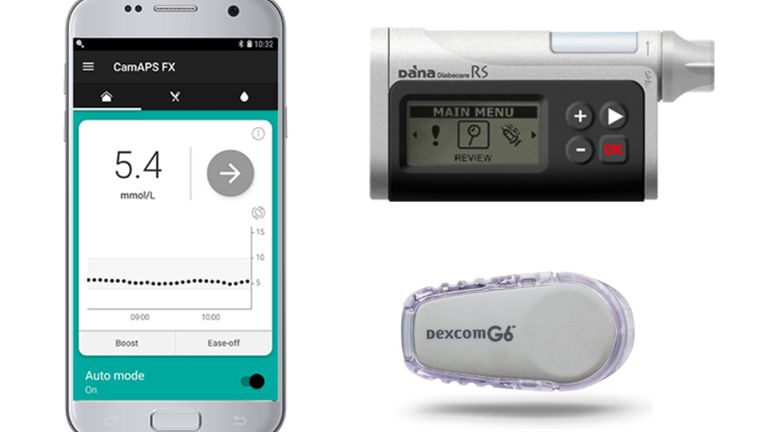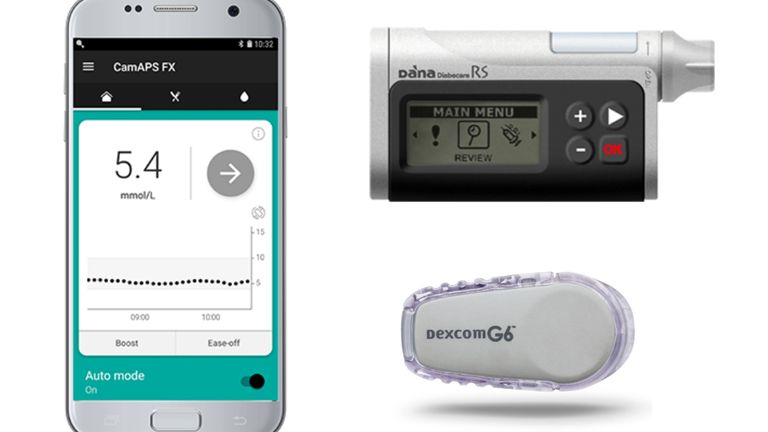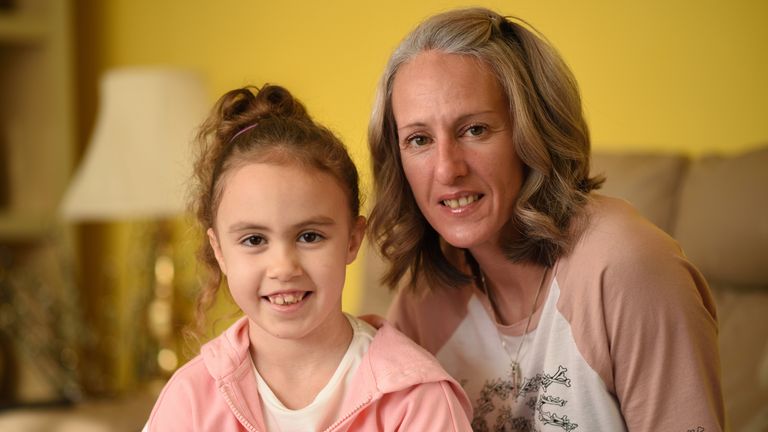
An artificial pancreas has proven “life-changing” for very young children with Type 1 diabetes, experts have said.
The device, created by scientists at the University of Cambridge, is more effective at managing blood sugar levels than current technology.
And according to a study published in the New England Journal of Medicine, the app-based technology also requires less input from parents.
The app was developed by Professor Roman Hovorka from the Wellcome-Medical Research Council Institute of Metabolic Science at the University of Cambridge.
He said: “CamAPS FX makes predictions about what it thinks is likely to happen next based on past experience.
“It learns how much insulin the child needs per day and how this changes at different times of the day.
“It then uses this to adjust insulin levels to help achieve ideal blood sugar levels. Other than at mealtimes, it is fully automated, so parents do not need to continually monitor their child’s blood sugar levels.”
Managing Type 1 diabetes is challenging in very young children owing to variability in the levels of insulin required and how each child responds to treatment, as well as unpredictability around how much they eat and exercise.
Children are particularly at risk of dangerously low blood sugar levels (hypoglycaemia) and high blood sugar levels (hyperglycaemia), which can both damage the body or even lead to death.
How does the new technology work?
This sensor-augmented pump therapy requires parents to review their child’s glucose levels using a monitor and then manually adjust the amount of insulin they need.
However, the app, combined with a glucose monitor and insulin pump, acts as an artificial pancreas, automatically adjusting the amount of insulin it delivers based on predicted or real-time glucose levels.
Sam Wright, mother to six-year-old Sofia, used to have to do finger-prick blood tests on her daughter and set alarms at night to check her glucose levels.
But the CamAPS FX app has revolutionised Sofia’s care.
Ms Wright said: “I have full trust in the CamAPS FX app and I feel like for the first time since the diagnosis I can relax.
“You wouldn’t know that she is any different from any of her classmates and that is thanks to the CamAPS FX app.”
Working in seven centres in the UK and Europe, Prof Hovorka and an international team of researchers recruited 74 children with Type 1 diabetes, aged one to seven, to take part in their clinical trial.
This compared the safety and effectiveness of hybrid closed-loop therapy with regular sensor-augmented pump therapy.
What trusts are making CamAPS FX available?
All children used the CamAPS FX hybrid closed-loop system for 16 weeks, and then used the regular treatment (sensor-augmented pump therapy) for 16 weeks.
On average, children spent around three-quarters of their day (72%) in the target range for their glucose levels when using CamAPS FX – almost nine percentage points higher than the current technology.
The app also reduced average blood sugar levels when using a measure known as glycated haemoglobin, or HbA1c.
CamAPS FX is available through several NHS trusts, including Cambridge University Hospitals NHS Foundation Trust.







More Stories
5 Reasons Why Everyone Should Look Forward to Save Earth Mission’s Takeoff Event
Save Earth Mission’s Takeoff Event Countdown Starts: Get Ready to Witness History
The Save Earth Mission: A Global Movement Towards a Sustainable Future